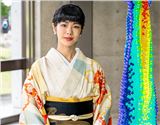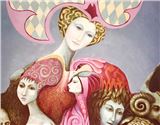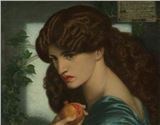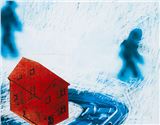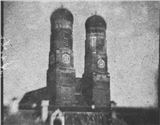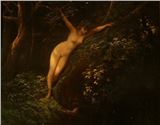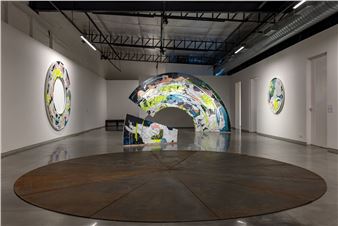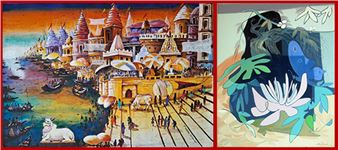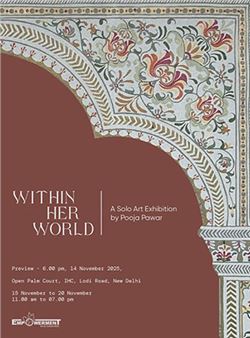Manish Pushkale: Sparsh Rekha
The concept of Sparsh Rekha (the tangent line) provides a powerful metaphor for Manish Pushkale’s artistic practice. It is the moment when a straight line just brushes against a curve, touching but not fully merging, marking an interlude in a continuous journey. This exhibition represents such an interlude in Pushkale’s work, a fleeting moment of reflection, questioning, and transformation.
Sparsh Rekha reflects how Pushkale's artistic language oscillates between memory and imagination. His search for meaning is an ongoing process, driven by the desire to disrupt his peace and provoke new ideas. In this exhibition, his works embody a strange newness—where the known and the unknown converge, and imagery rises from the gaps between them.
A recurring motif in Pushkale's practice is the form of the "stitch." While this may bring to mind traditional forms of stitching, he invites the viewer to consider a deeper question: What happens when we encounter the blank space—when we are asked to "fill in the blank"? For Pushkale, the blank, represents a space for personal reflection, where its interpretation isn’t available for the audience, but rather discovered within themselves. This act of filling in the blank becomes a metaphor for the creative process itself; a place for thought, imagination, and interpretation to converge.

The concept of Sparsh Rekha (the tangent line) provides a powerful metaphor for Manish Pushkale’s artistic practice. It is the moment when a straight line just brushes against a curve, touching but not fully merging, marking an interlude in a continuous journey. This exhibition represents such an interlude in Pushkale’s work, a fleeting moment of reflection, questioning, and transformation.
Sparsh Rekha reflects how Pushkale's artistic language oscillates between memory and imagination. His search for meaning is an ongoing process, driven by the desire to disrupt his peace and provoke new ideas. In this exhibition, his works embody a strange newness—where the known and the unknown converge, and imagery rises from the gaps between them.
A recurring motif in Pushkale's practice is the form of the "stitch." While this may bring to mind traditional forms of stitching, he invites the viewer to consider a deeper question: What happens when we encounter the blank space—when we are asked to "fill in the blank"? For Pushkale, the blank, represents a space for personal reflection, where its interpretation isn’t available for the audience, but rather discovered within themselves. This act of filling in the blank becomes a metaphor for the creative process itself; a place for thought, imagination, and interpretation to converge.

 ARTISTS
ARTISTS
